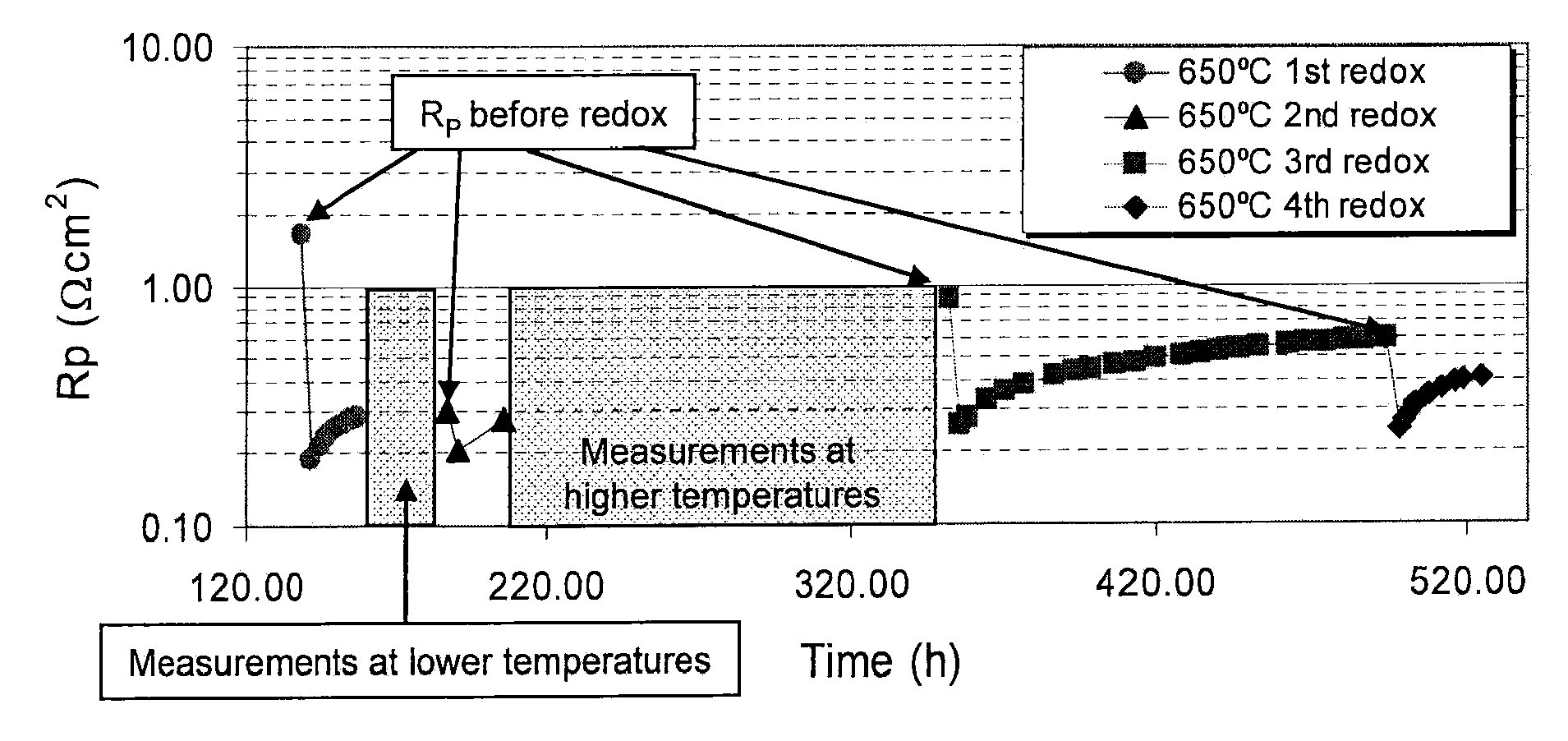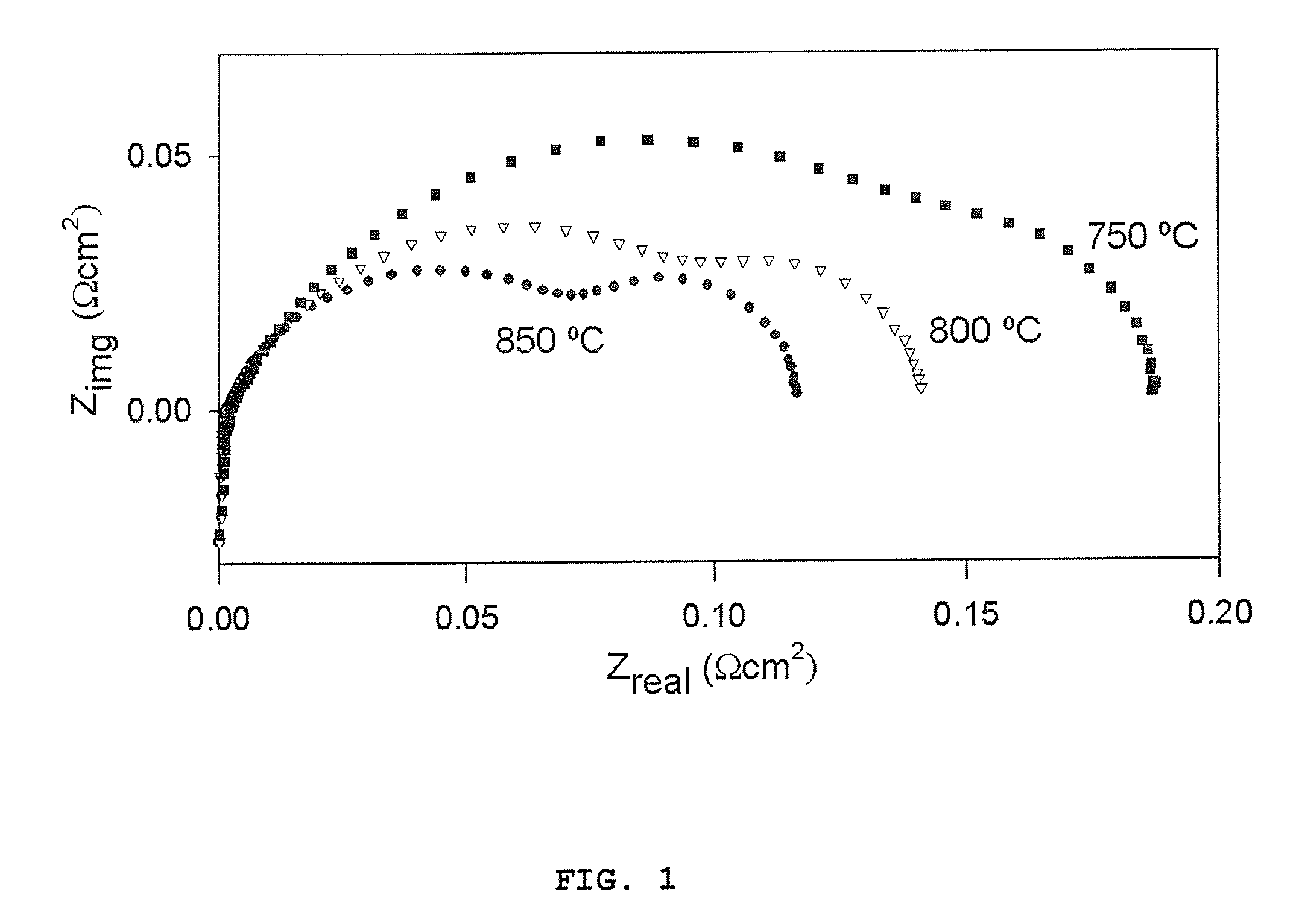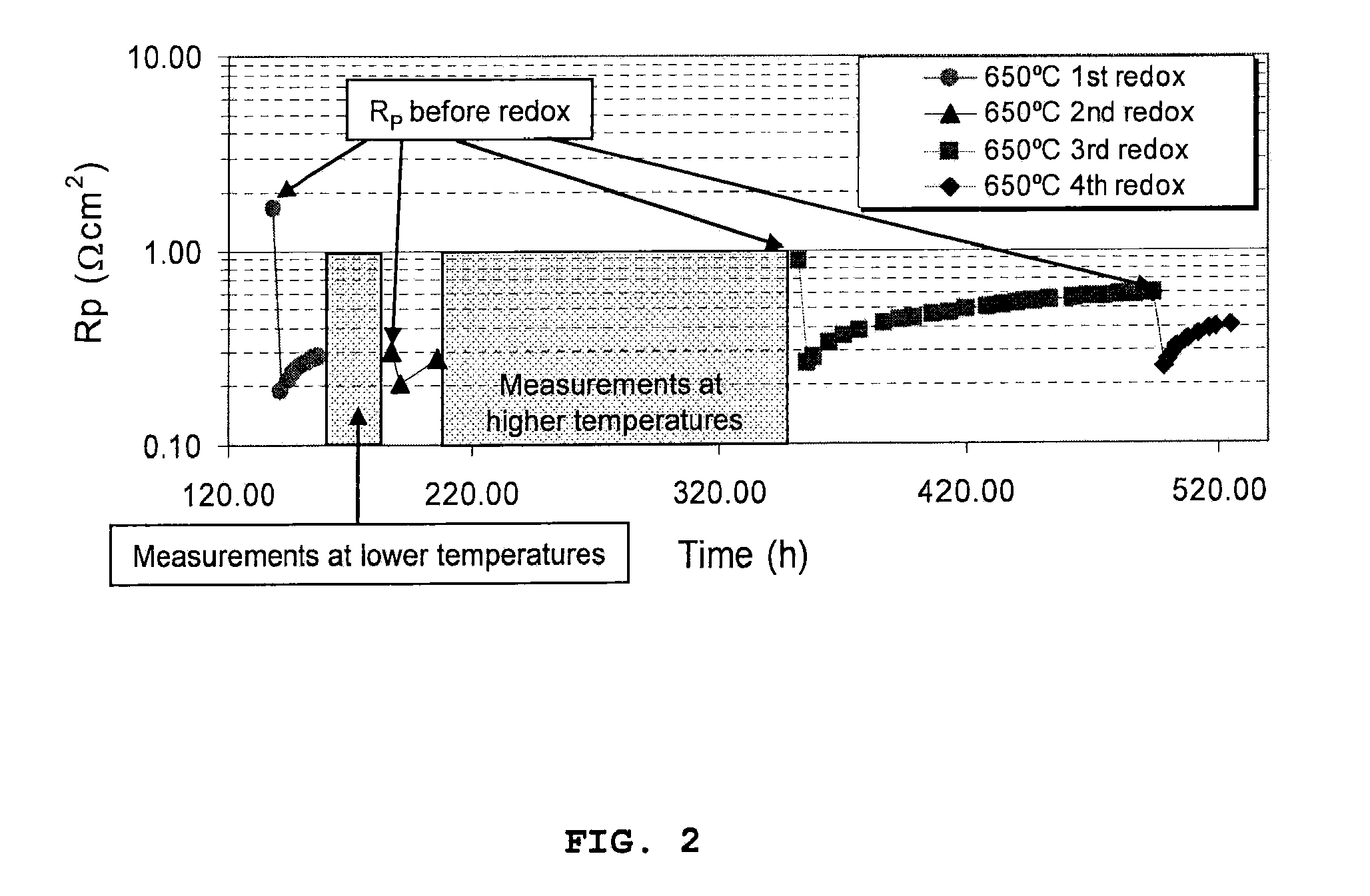Ceria and strontium titanate based electrodes
a technology of strontium titanate and electrodes, which is applied in the direction of cell components, electrochemical generators, electric devices, etc., can solve the problems of inexpedient mechanical stresses in the anode, impair the performance of the fuel cell, and not redox stable, etc., to achieve short hold times, lower calcination temperatures, and bet surface area high
- Summary
- Abstract
- Description
- Claims
- Application Information
AI Technical Summary
Benefits of technology
Problems solved by technology
Method used
Image
Examples
example 1
[0078]The following procedure was used to fabricate the infiltration solution which was used to fabricate an all ceramic SOFC anode.[0079]1. An ethanol solution (ca: 10 g ethanol) containing 0.8 moles / liter cerium nitrate and 0.2 moles / liter gadolinium nitrate was prepared.[0080]2. 1 g Pluronic P123 surfactant was dissolved in the nitrate solution at room temperature.[0081]3. (Optional) Two solutions can be made separately. One with the cerium and gadolinium nitrates and one with the Pluronic P123 surfactant. The solutions can be mixed when the species are completely dissolved in the solvents. Not only ethanol can be used. Other solvents (or mixtures of solvents) that can dissolve the nitrates and the surfactant can be used (e.g. water).[0082]4. (Optional) Extra surfactant (e.g. Triton X-45 or Triton X-100) can be added to improve the wetting of the infiltration solution. In one experiment approximately 0.3 g Triton X-100 was added to the nitrate and Pluronic P123 solution.[0083]5. ...
example 2
[0090]Same method as Example 1, but where Step 6 is slightly changed: the slurry in Step 6 comprised Nb-doped SrTiO3 and 8-mole yttria stabilized zirconia in a volume ratio of approximately 1:1.
example 3
[0091]Same method as Example 1, but where Step 6 is slightly changed: the slurry in Step 6 comprised Nb-doped SrTiO3 and Gd-doped CeO2 in a volume ratio of approximately 1:1.
PUM
| Property | Measurement | Unit |
|---|---|---|
| temperature | aaaaa | aaaaa |
| operating temperatures | aaaaa | aaaaa |
| grain sizes | aaaaa | aaaaa |
Abstract
Description
Claims
Application Information
 Login to View More
Login to View More - R&D
- Intellectual Property
- Life Sciences
- Materials
- Tech Scout
- Unparalleled Data Quality
- Higher Quality Content
- 60% Fewer Hallucinations
Browse by: Latest US Patents, China's latest patents, Technical Efficacy Thesaurus, Application Domain, Technology Topic, Popular Technical Reports.
© 2025 PatSnap. All rights reserved.Legal|Privacy policy|Modern Slavery Act Transparency Statement|Sitemap|About US| Contact US: help@patsnap.com



